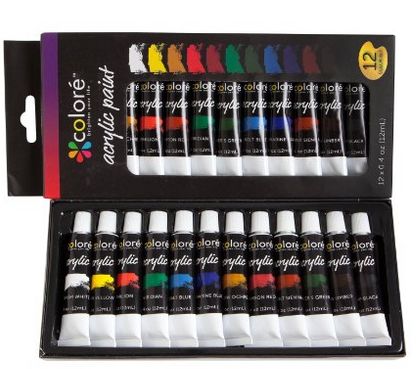Remember when you were in grade school and painting seemed so simple when your teacher just handed you art supplies and helped wash brushes afterwards? Approaching the medium as a elderly artist, you should find out about paintbrush materials and ways to properly take care of your brushes.

First, you should decide whether you will be needing soft or stiff hairs for your paintbrush. Either can be produced of natural hairs or synthetic fibers. A thin paintbrush is right if you want to complete detailed work or precise painting. It enables you to definitely spread paint easily. Hard bristles alternatively are better for manipulating thick paint. This enables you to create brush marks inside the paint that can be seen for the canvas. Vincent van Gogh’s tasks are renowned for it, as evidenced by his painting The Starry Night.
Most purists will point out that natural hair will be superior to synthetic fiber because of its flexibility and strength. The hair for paintbrushes emanates from animals including Sable, squirrel, hog, camel, ox, pony and goat. If your thought of using hair in one of those animals enables you to squeamish or perhaps you have ideological problems with this, tend not to fear: modern acrylic paint kit have fallen quite a distance and they are much less expensive than their natural hair counterparts.
The next thing is to learn a little bit about paintbrush anatomy. The handle is normally created from wood and is also referred to as ferrule. This props up hairs or bristles. The top in the bristles is called the toe.
When deciding which paintbrush doing his thing is very important to find out how big is the comb. This could be determined by looking at lots to the side of the handle. The littlest dimensions are 00 followed by 0, 1, 2 and so on. If you’re buying online you should visit a picture of the brush you’re purchasing. Two brushes sized exactly the same can in fact be completely different due to amount of bristles and also the width in the handle. This issue may be alleviated if you shop in a actual store or are already familiar with the brand of brush.
It will take time and effort and cash to obtain the right paintbrush, therefore it makes sense to keep up them, which include proper cleaning after each use.
Before starting, be sure you have mild soap (or turpentine if appropriate) and a few tissue. You’ll need lukewarm water plus a place to dry your brushes.
Wipe off of the excess paint employing a soft cloth or tissue. Then, rinse your brushes in turpentine if you are using oils, but use lukewarm water if you are paint is water-based. Warm water could cause the hairs of one’s brush to fall out. Afterwards, gently wash your brushes with mild soap. Repeat all over again as many times as necessary until no color comes out as well as your brush returns to its original color. Next rinse your paintbrush in water that is clean. Make sure to get rid of the surplus water next. If your brushes seem misshapen, use your fingers to softly bring the brush head back to its original shape.
Now you you will need to dry the paintbrushes. Wrap the bristles in tissue or mouthwash while they are wet. If the bristles dry they are going to contract like this and can maintain their shape. Allow the brushes dry at room temperature. Do not rest them on their own head as this is another potential hazard to maintaining appropriate shape.
To get more information about paint colors check out this popular site: check it out
